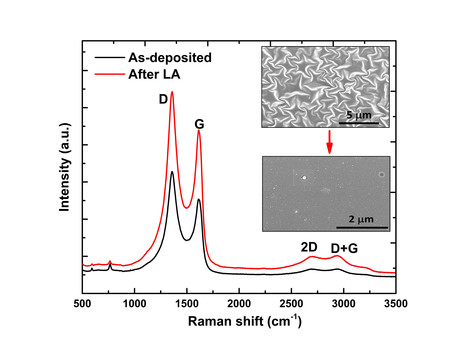Transistors made of reduced graphene oxide

Researchers from North Carolina State University (NC State) have developed a technique for converting positively charged (p-type) reduced graphene oxide (rGO) into negatively charged (n-type) rGO, creating a layered material that can be used to develop rGO-based transistors for use in electronic devices.
“Graphene is extremely conductive, but is not a semiconductor,” explained Professor Jay Narayan. “Graphene oxide has a bandgap like a semiconductor, but does not conduct well at all. So we created rGO.
“But rGO is p-type, and we needed to find a way to make n-type rGO. And now we have it for next-generation, two-dimensional electronic devices.”
With the assistance of PhD student Anagh Bhaumik, Professor Narayan was able to integrate rGO onto sapphire and silicon wafers. The researchers then used high-powered laser pulses to disrupt chemical groups at regular intervals across the wafer. This disruption moved electrons from one group to another, effectively converting p-type rGO to n-type rGO.
The process was done at room temperature and pressure, using high-power nanosecond laser pulses, and completed in less than one-fifth of a microsecond. The laser radiation annealing provided a high degree of spatial and depth control for creating the n-type regions needed to create p-n junction-based two-dimensional electronic devices.
The end result, published in the Journal of Applied Physics, was a wafer with a layer of n-type rGO on the surface and a layer of p-type rGO underneath. The p-n junction, where the two types meet, is what makes the material useful for transistor applications.
3D semiconductor chip alignment boosts performance
Researchers have developed an ultra-precise method to align 3D semiconductor chips using lasers...
Researchers achieve 8 W output from optical parametric oscillator
Researchers have demonstrated a total output power of 8 W from a high-power mid-infrared cadmium...
"Dualtronic" chip for integrated electronics and photonics
Cornell researchers have developed a dual-sided chip known as a "dualtronic" chip that...






